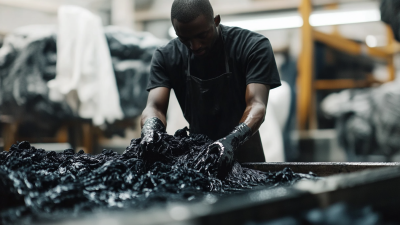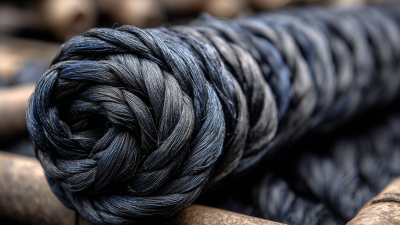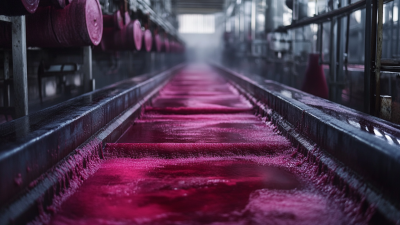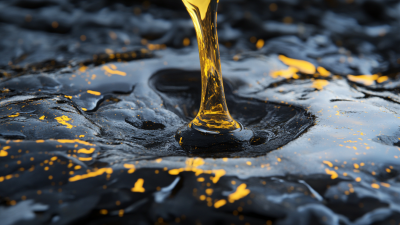Sulphur Black Dye, renowned for its deep and rich coloration, is widely used in the textile industry, predominantly for dyeing cotton and other cellulosic fibers. According to a report by Allied Market Research, the global textile dye market is expected to reach $55.59 billion by 2025, with sulphur dyes holding a significant market share due to their cost-effectiveness and efficient application. However, the environmental implications of using Sulphur Black Dye cannot be overlooked, as its production and application can lead to considerable water pollution if not properly managed. Studies indicate that sulphur dyeing processes can release harmful by-products, which may contaminate water sources, affecting aquatic life and local communities. Understanding the science behind Sulphur Black Dye, its various industrial applications, and its environmental impact is crucial for developing sustainable practices that balance profitability with ecological responsibility in the textile sector.

 Sulphur black dye is notable for its complex chemical composition and unique properties, which have rendered it a popular choice in textile dyeing applications. It is primarily composed of sulphur compounds, which provide robust coloration and are often employed for their fastness properties, making them suitable for use in heavy-duty textiles. The Colour Index™ system plays a crucial role in categorizing these dyes, ensuring clarity in their chemical classifications and easier tracking of their applications.
Sulphur black dye is notable for its complex chemical composition and unique properties, which have rendered it a popular choice in textile dyeing applications. It is primarily composed of sulphur compounds, which provide robust coloration and are often employed for their fastness properties, making them suitable for use in heavy-duty textiles. The Colour Index™ system plays a crucial role in categorizing these dyes, ensuring clarity in their chemical classifications and easier tracking of their applications.
However, the widespread use of sulphur black dye raises significant environmental concerns, especially regarding the pollution caused by textile wastewater, which often contains heavy metals and toxic dye residues. Advanced strategies, such as graphene oxide-based adsorption and photocatalytic degradation methods utilizing TiO₂ @Ag nanoparticles, are being explored to mitigate these environmental impacts. These strategies are pivotal in addressing the challenges posed by dye effluents, as they aim to effectively remove contaminants from water, thus paving the way for more sustainable practices in the textile industry.
Sulphur black dye has a rich historical background that dates back centuries, initially discovered in regions like India and China. The dye gained prominence during the late 19th century when it revolutionized the textile industry. Its ability to produce deep, rich black shades on various fabrics made it a favorite among manufacturers. The process of dyeing with sulphur black involves the use of sulphur compounds, which reduce the dye to a soluble state, allowing it to penetrate the fibers. This distinctive method has allowed sulphur black to become a staple in dyeing cotton and other cellulosic materials.
Over the years, sulphur black dye has been employed in diverse applications beyond textiles, including leather and paper industries. Due to its fastness properties, sulphur black is highly valued for products that require durability against fading and washing. However, the environmental impact of sulphur black dyeing processes raises concerns. Waste generated from the dyeing process often contains harmful chemicals, necessitating stringent wastewater treatment measures. As sustainability becomes a priority, the industry faces the challenge of balancing the effectiveness of sulphur black dye with environmental responsibilities, leading to ongoing research into greener alternatives and better practices.

The production of sulphur black dye, widely used in textile coloring, raises significant environmental concerns due to the processes involved in its synthesis and application. The dye is primarily derived from sulphur compounds, which can result in the release of hazardous substances during manufacturing. These substances may contaminate water sources, leading to detrimental effects on aquatic ecosystems. Additionally, the high toxicity of some intermediates used in dye production can pose risks to the health of workers in the industry if proper safety measures are not implemented.
Another major issue related to sulphur black dye is its persistence in the environment. Once released, the dye does not easily biodegrade, leading to long-term pollution in water bodies and soil. Such contamination can disrupt local flora and fauna, affecting biodiversity and water quality. Furthermore, when textiles dyed with sulphur black are washed, residual chemicals can leach into wastewater systems, exacerbating the issue. As concerns about sustainability grow, it is crucial for manufacturers to adopt more eco-friendly practices, such as advanced wastewater treatment and the use of alternative dyes that minimize environmental impact.
Sulphur black dye has been a staple in the textile industry for its deep color and cost-effectiveness. However, its production and application often raise environmental concerns. As sustainability becomes increasingly crucial, innovative solutions are being developed to mitigate these impacts. One approach involves utilizing natural materials and alternative methods in the dyeing process. For instance, integrating biopolymer-based additives can enhance the dyeing efficiency while reducing harmful discharge.
Tips: Always opt for dyes that comply with environmental standards and certifications. Implementing closed-loop systems in dyeing facilities can significantly reduce water usage and chemical waste, contributing to a more sustainable practice.
Moreover, advancements in technology, such as digital printing and lower-temperature dyeing techniques, are paving the way for more sustainable applications of sulphur black dye. These innovations not only reduce energy consumption but also allow for better control over dyeing processes, leading to improved product quality. By embracing these methods, the industry can reap the benefits of sulphur black dye while minimizing its ecological footprint.
Tips: Stay informed about the latest developments in environmentally friendly dyeing technologies. Engaging in workshops or training sessions can equip businesses with the skills needed to transition to more sustainable practices successfully.
| Application Area | Typical Use | Environmental Impact | Sustainable Alternatives |
|---|---|---|---|
| Textile Industry | Dyeing cotton and synthetic fabrics | Potential water pollution from waste effluents | Natural dyes from plant sources |
| Leather Industry | Tanning and coloring leather | Chemical runoff affecting soil and waterways | Vegetable tanning methods |
| Paper Industry | Coating and coloring of paper products | Contamination of aquatic ecosystems | Low-impact pigments from organic materials |
| Cosmetics | Formulations requiring color additives | Skin irritation and long-term toxicity risks | Mineral-based and natural colorants |
| Construction Materials | Pigmentation of cement and concrete | Leaching of heavy metals into the ground | Use of eco-friendly mineral pigments |
As the demand for sustainable and eco-friendly dyeing techniques continues to rise, the future directions in the research and application of sulphur black dye are becoming increasingly relevant. Innovative approaches to enhancing the dye's properties are being explored, including the development of modified formulations that enable better color fastness and increased solubility. Researchers are also investigating the potential of combining sulphur black dye with bio-based materials to create more sustainable dyeing processes that minimize environmental impact while maintaining performance quality.
Moreover, future studies are likely to focus on the biodegradability of sulphur black dye, assessing the life cycle impact from production to disposal. By understanding and improving how this dye interacts with natural ecosystems, researchers can help mitigate potential risks associated with its use. Furthermore, advancements in nanotechnology could lead to more efficient application techniques, reducing water and chemical consumption in the dyeing process. Overall, ongoing research is set to play a pivotal role in adapting sulphur black dye for a greener, more sustainable future in the textile industry.






